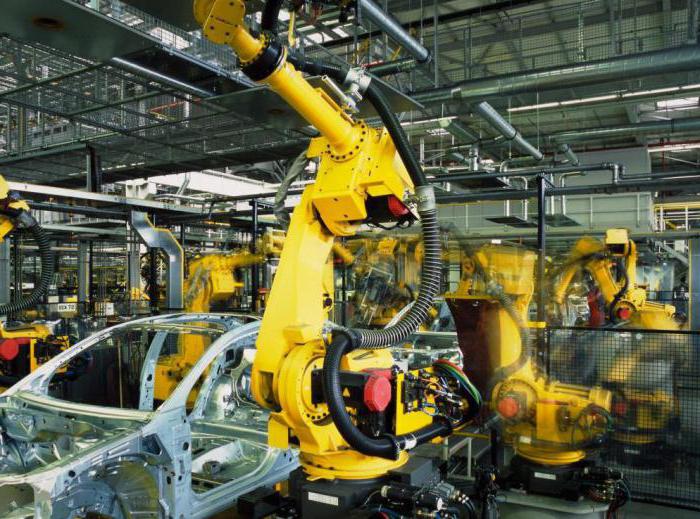To solve various problems of an analytical nature, the decomposition method is used. Thanks to this approach, experts split the goal into several small subtasks, the solution of which leads to the expected result. Various systems can also be decomposed, which allows a deeper and more detailed study of a particular area. In addition, decomposition is a method that allows you to explore processes and phenomena. The main task facing the operator is the correct definition of the feature by which the subsystems will be distinguished. At the same time, it is important to take into account other aspects of the process so as not to disrupt the given direction of research.
Decomposition of goals

The technique of splitting goals has long been an essential tool in various areas of management, among which is management. At the same time, experts identify many problems that users of this method face. First of all, this is the contradictory nature of new goals. So, in the process of decomposing a task involving increasing incomes, it is possible to form goals such as increasing the efficiency of personnel and at the same time reducing it. In this case, decomposition is a tool that only highlights subgoals, but does not give an idea of the direct achievement of the main result. Therefore, among the main tasks of the researcher, one can single out the competent arrangement of subgoals in accordance with their levels, as well as taking into account the heterogeneity of the underlying subsystems. There are also situations when the achievement of the result does not follow from the highlighted subgoals - such factors can disrupt the motivation of employees and lead to the opposite effect in the same management.
Decomposition as a process

If we consider decomposition as a process, it will be a simplification of a certain system without losing its integrity. In the course of such a study, new levels are discovered, between which hierarchical ligaments are formed. Again, the decomposition of processes does not mean a change in the essence of the analyzed object, and even its simplification is conditional. In the course of such splitting, only an in-depth identification of the components, internal phenomena and processes in the object occurs. Analysis allows you to solve problems in working with different subjects. It is a mistake to believe that decomposition creates new problems. Before the processes of isolating subsystems, they could be essential and undetected, but due to separation, it becomes possible to eliminate the arising uncertainty.
Decomposition Types
Usually, decomposition is considered as one of the methods of system analysis of an object. At the same time, there are various methods of applying this technique, depending on which the decomposition of goals can be functional, structural or object. In each case, it is assumed its own way of forming signs of separation into subsystems. In addition, there are different approaches to the functional support of the newly formed parts.

In the case of structural decomposition, the very concept of separation comes to the fore on the basis of which the system is analyzed in future from the point of view of achieving goals. Object decomposition, on the other hand, is a partition, which should be attributed to techniques with in-depth analysis, not designed for further functional application of the results.
Decomposition principles
To achieve the maximum effect of decomposition, the method must be performed in accordance with several principles. The main thing worth noting is the simplicity of the formation of subgoals. This means that the identified tasks will be clear to those who will work on them.
The following principle presupposes the completeness of goals, which will be a reflection of the task. It may seem that a complete and deep decomposition of the system is impossible if two of the above principles are observed at the same time, but this is the contradictory nature of the separation of systems, which can still be circumvented.
The principle of system unity will help to cope with the task of eliminating the contradiction. In accordance with it, the researcher forms subgoals at each level so that they are independent of the tasks at the higher links.
Another important principle is elementary. All goals must be optimized as much as possible so that they can be realized in as soon as possible.
Decomposition structure

Regardless of the type of composition, as a result, it should present a hierarchical structure with several levels. The lowest level is the initial system, which, in fact, provides the basis for the formation of subsequent links. Typically, finished structures are presented in the form of branching flowcharts in which the number of individual chains and links can be different. Also, do not forget that decomposition is not only articulated levels and blocks with subsystems, but also the bundles between them. To work on this part of the preparation of hierarchical schemes, graph theory is often used, which, in particular, makes it possible to switch from a simple graphical model to a mathematical representation.
Conclusion

In one form or another, decomposition is used in almost all branches of human activity. The simplest example can be the manufacture of technical mechanisms, during which the assembly and linking of individual elements is performed. However, far from always the decomposition method can be just as simple and understandable. In complex systems, problems such as disruption of the functioning and interaction of individual subsystems with each other arise. The missing algorithm for joining split blocks is also a common problem, in the solution of which several options for implementing decomposition are used. In practice, it is also not always possible to dismember the system to an acceptable level due to a lack of basic information about the system and its properties.
